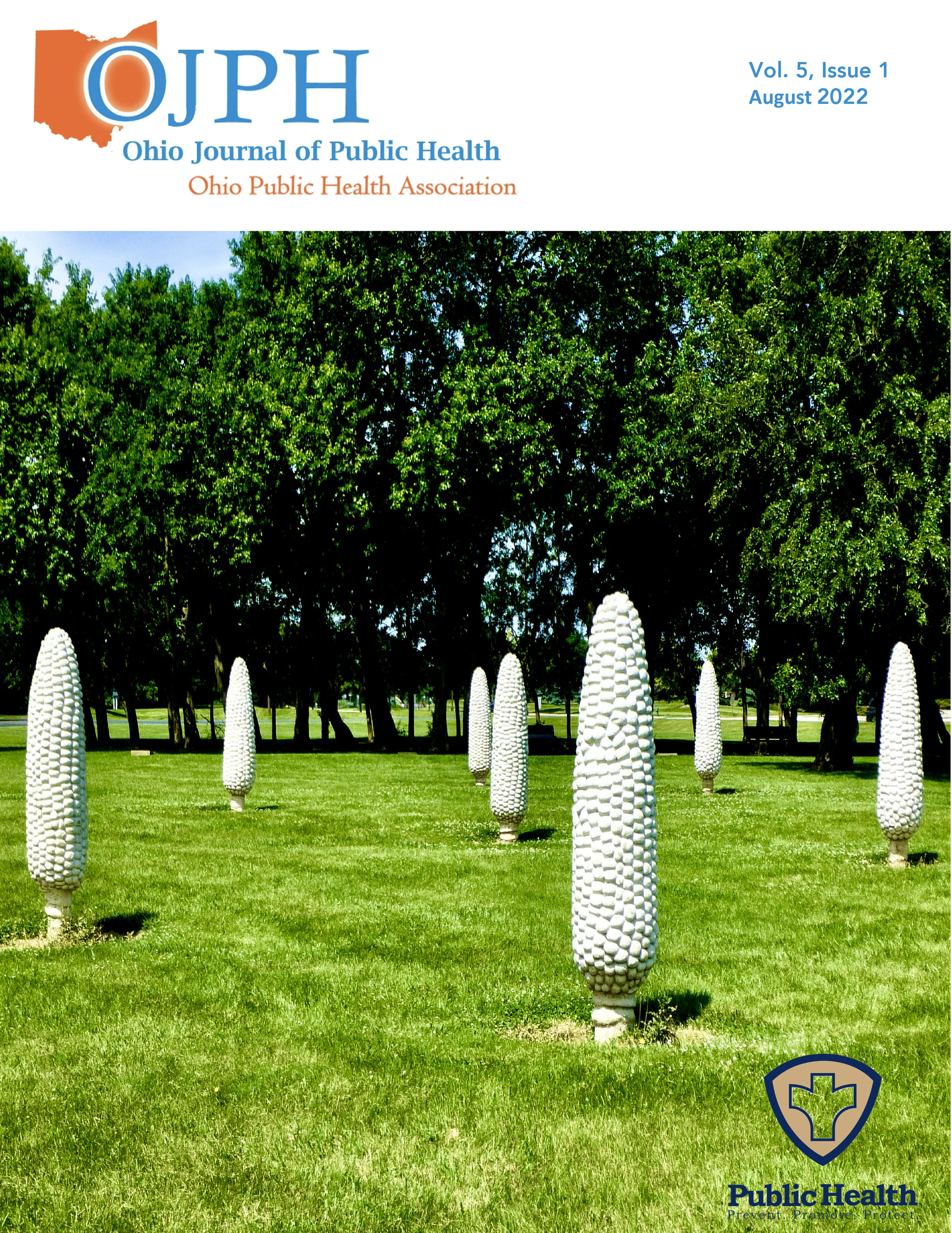Depressive Symptoms and Perception of COVID-19 Risk in Ohio Adults
DOI:
https://doi.org/10.18061/ojph.v5i1.8805Keywords:
COVID-19, Depressive symptoms, PHQ-2, Risk perceptionAbstract
Background: We assessed the relationship between depressive symptoms and perceived COVID-19 risk in the next month.
Methods: This analysis used survey data collected during a July 2020 cross-sectional study using a household-based probability sampling design. A total of 615 noninstitutionalized, English- and/or Spanish-speaking adults in Ohio were included. Depressive symptoms screening occurred using the Patient Health Questionnaire-2 (PHQ-2). We applied survey weights so that presented analyses represent the adult population in Ohio. We performed log-risk regression modeling (generalized linear model with binomial distribution and log link) to estimate unadjusted and covariate-adjusted prevalence ratios examining the association between screening positive for depressive symptoms and perceived risk of COVID-19 in the next month.
Results: The study population was majority female (59.1%) and White (90.3%). The mean age was 55.9 years (standard deviation (SD)=17.3). About 1 in 20 (4.6%) screened positive for depressive symptoms. A positive depressive symptoms screen was not significantly associated with perceived risk of COVID-19 in the next month (prevalence ratio [PR]=0.75; 95% confidence interval [CI]=0.25–2.24). After confounder adjustment, the adjusted prevalence ratio (aPR) was nearly unchanged (aPR=0.78; 95% CI=0.24–2.55).
Conclusion: As depression is often associated with anxiety and pessimism toward the future, the lack of association between depressive symptoms screening and perception of COVID-19 risk in the next month is surprising. Social withdrawal, which is also associated with depression, may have concealed any increased perceived COVID-19 risk, as depressed individuals who remained socially isolated may have had lower perceived COVID-19 risk.
Downloads
Published
Issue
Section
License
Copyright (c) 2022 Katarina M Bischof, Payal Chakraborty, William C Miller, Abigail Norris Turner

This work is licensed under a Creative Commons Attribution 4.0 International License.


